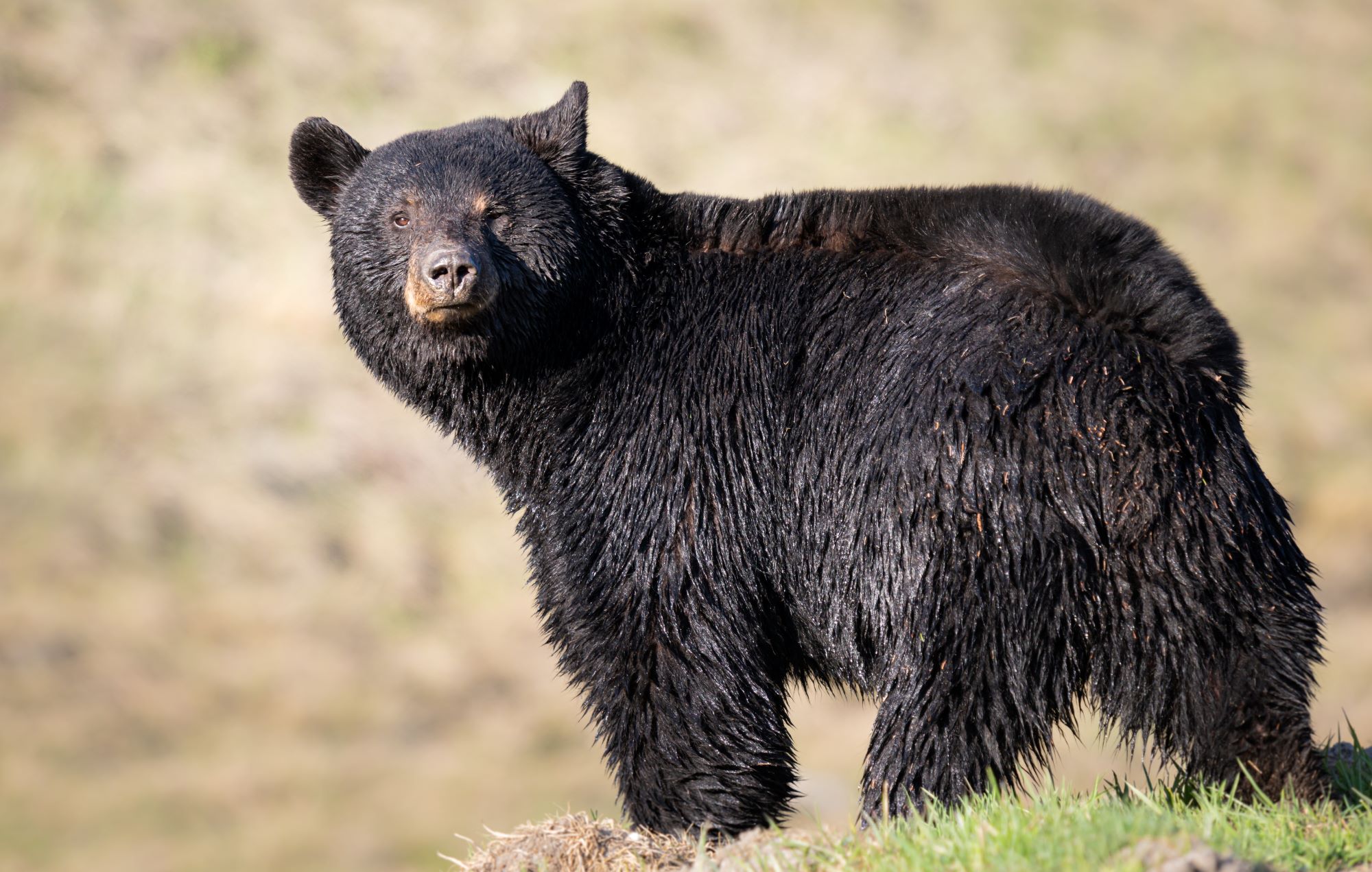
Black Bear in Utah
The black bear (Ursus americanus) in Utah represents the state's only bear species and plays a significant role in its ecosystems. These bears are primarily found in the forested mountainous areas, particularly in the Uinta Mountains, the Wasatch Range, and various parts of southern Utah. Their habitat in these regions provides the dense cover and food sources essential for their survival.
Black bears in Utah display a variety of color phases, ranging from black to brown, cinnamon, and even blonde, though the majority are black. Adult males typically weigh between 250-600 pounds, while females are smaller, averaging around 100-400 pounds. They are omnivorous, with their diet varying greatly depending on the season and available food sources. In the spring, their diet primarily consists of grasses, herbs, and foraging for carrion. During the summer, they shift to feeding on berries, fruits, and insects, and in the fall, they focus on high-calorie foods like nuts and acorns to build up fat reserves for winter hibernation.

Black bears in Utah are generally shy and elusive, avoiding human contact. However, as the state's human population grows and outdoor recreational activities increase, encounters between bears and humans have become more frequent. These encounters are often related to human food sources, such as garbage, campsite food, or orchards, leading to bears becoming habituated to human presence, a situation that can lead to conflicts.
To manage and conserve black bear populations, Utah employs a variety of strategies. These include public education campaigns on bear safety and proper food storage in bear country, research on bear behavior and ecology, habitat management to ensure healthy and sufficient natural food sources, and, where necessary, the relocation of problem bears.
The state also has a regulated hunting season for black bears, managed under a strict quota system designed to ensure a sustainable bear population. This system is based on ongoing research and monitoring, which includes tracking bear-human conflicts, assessing natural food availability, and studying bear demographics.
Utah's black bear populations have generally been stable and healthy in recent years. Conservation efforts focus not only on maintaining this stability but also on ensuring that bears and humans can coexist peacefully. This involves continual adjustments in management practices in response to changing conditions, be it in bear behavior, habitat quality, or human activities in bear habitats.
In summary, black bears in Utah are an integral part of the state's natural heritage, contributing to the biodiversity and ecological balance of its mountainous regions. Their management is a dynamic process, involving a combination of public education, habitat conservation, and careful population monitoring to ensure that both bears and humans can safely share the state's diverse landscapes.